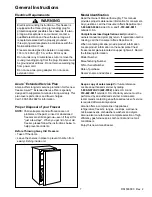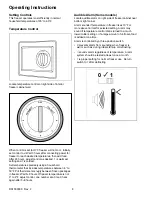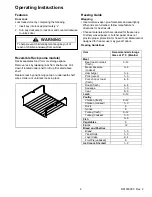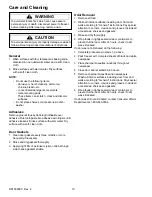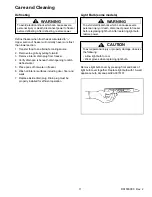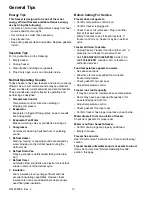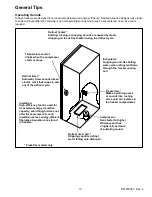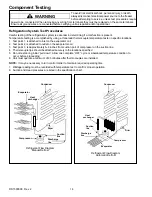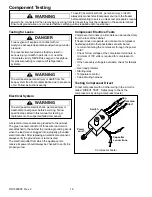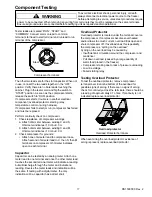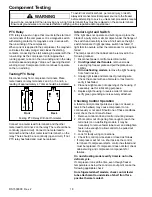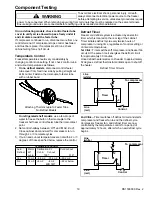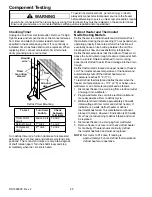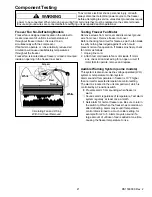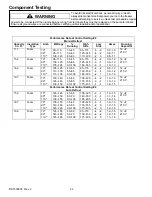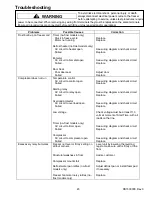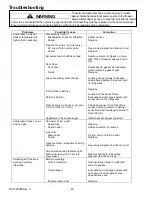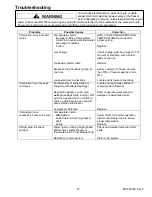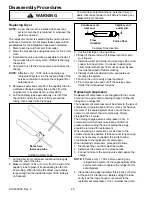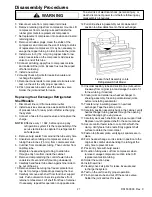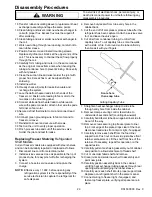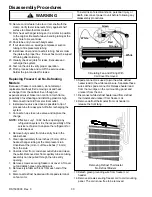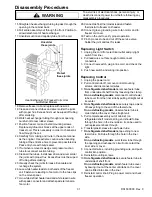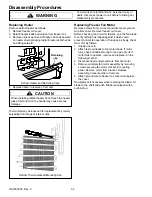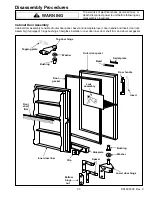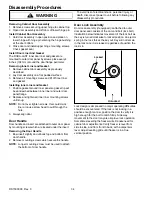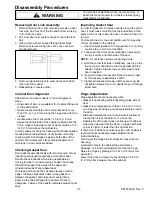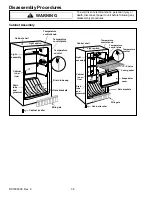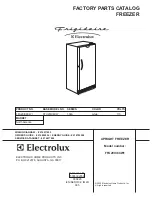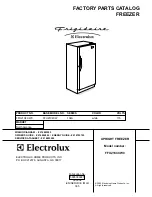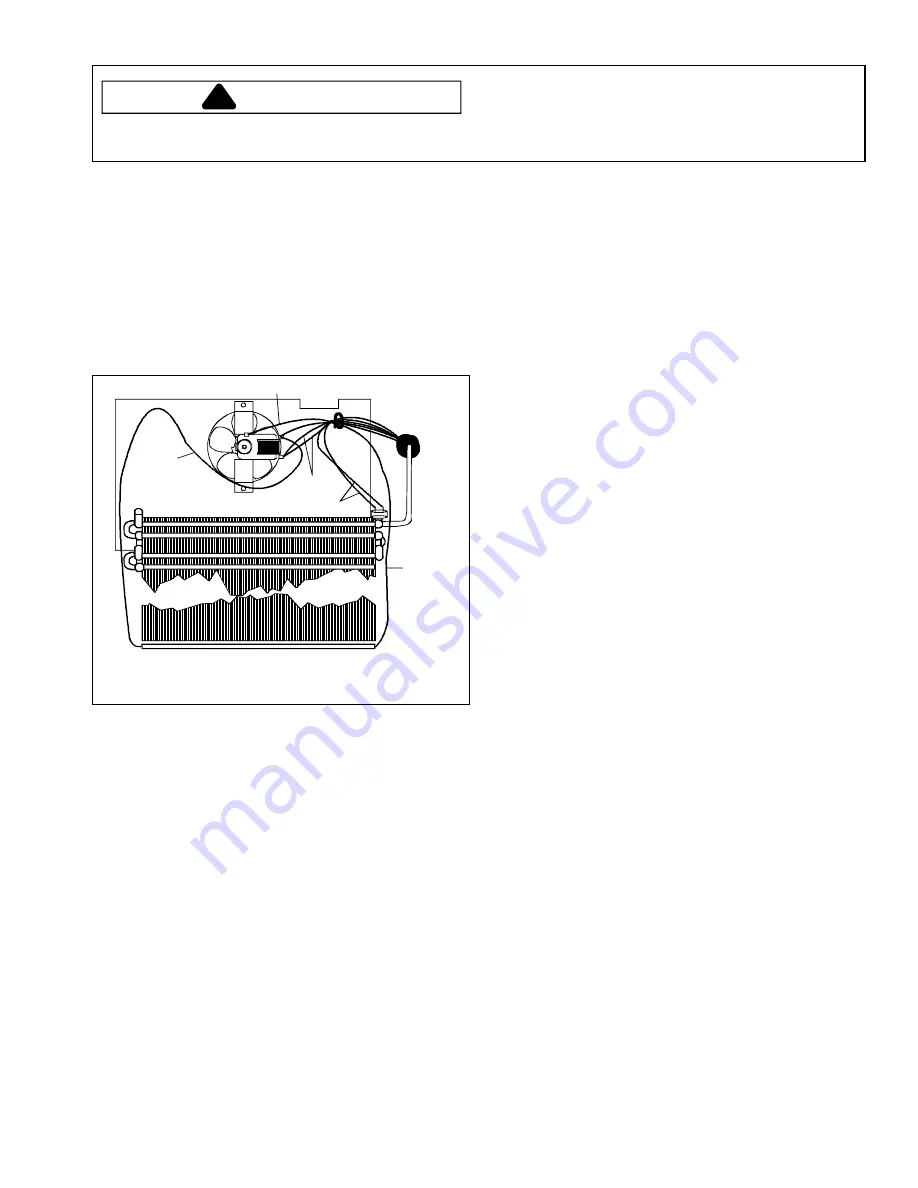
21
RS1500000 Rev. 2
Component Testing
To avoid risk electrical shock, personal injury, or death,
always disconnect electrical power source to the freezer
before attempting to service, unless test procedures require
power to be connected. When removing any wiring from terminals they must be replaced on the same terminals.
Ensure all ground wires are connected before certifying unit as repaired and/or operational.
WARNING
!
Freezer Fan No-Defrosting Models
Freezer fan is designed and located in the cabinet to
create movement of uniform low temperature air
throughout freezer interior. It is wired to run
simultaneously with the compressor.
If fan fails to operate, or runs erratically, reduced air
circulation will cause unsatisfactory temperatures
throughout the freezer.
Freezer fan is located above freezer coil and is mounted
inside an opening in the freezer liner back.
White
White
Orange
Green
Red
Circulating Fan and Wiring
With Coil Cover Removed
Testing Freezer Fan Motor
Remove screws from coil cover and disconnect ground
wire from cover. Remove freezer coil cover.
Before checking fan circuit for failures, spin the fan blade
to verify nothing has lodged against it which could
prevent normal fan operation. If blade spins freely, check
fan motor as follows:
1. Unplug line cord.
2. Attach test cord leads to fan motor leads. If motor
runs, check all cabinet wiring for an open circuit. If
motor fails to operate, remove and replace.
Audible Warning System (some models)
This system is also know as line voltage operated (LVO)
system or temperature monitor system.
Alarm sounds if temperature in freezer is 10°F higher
than normal for selected temperature control setting.
The alarm is located in the unit compartment, which is
controlled by a 3-position switch.
0
Prevents alarm from sounding when freezer is
warm.
Ö
Sounds alarm regardless of temperature. Test alarm
system regularly; at least once a month.
1
Sets alarm for normal freezer use. Be sure to return
the switch to ON when the freezer has cooled down
after defrosting. Alarm may sound if temperature
control dial is turned to a much colder setting, for
example from 2 to 5. Alarm may also sound if a
large amount of unfrozen food is added at one time
causing the freezer temperature to rise.

